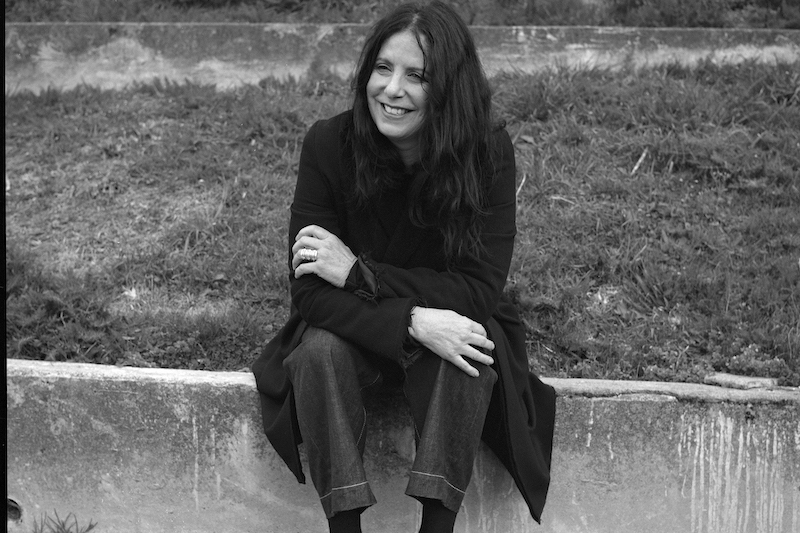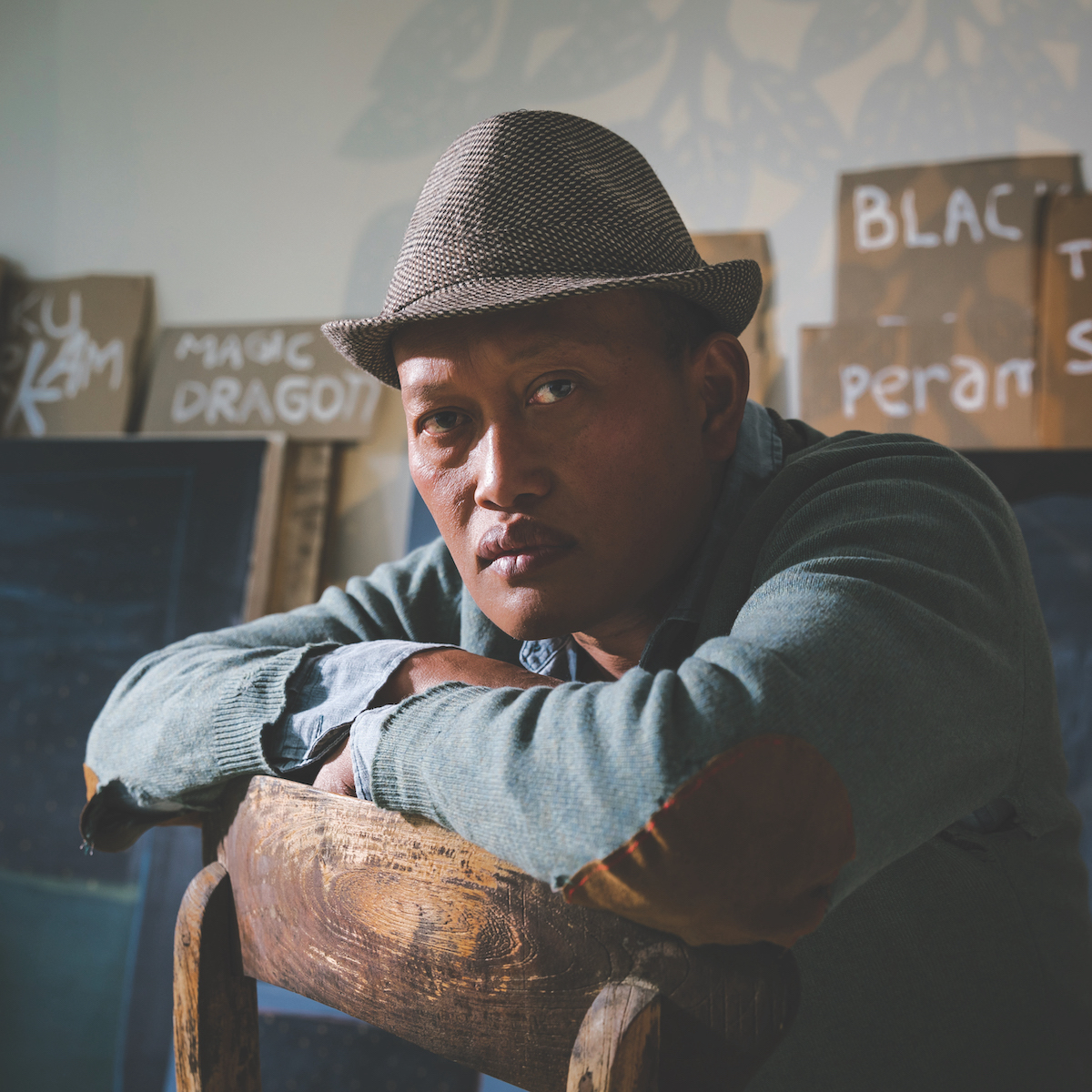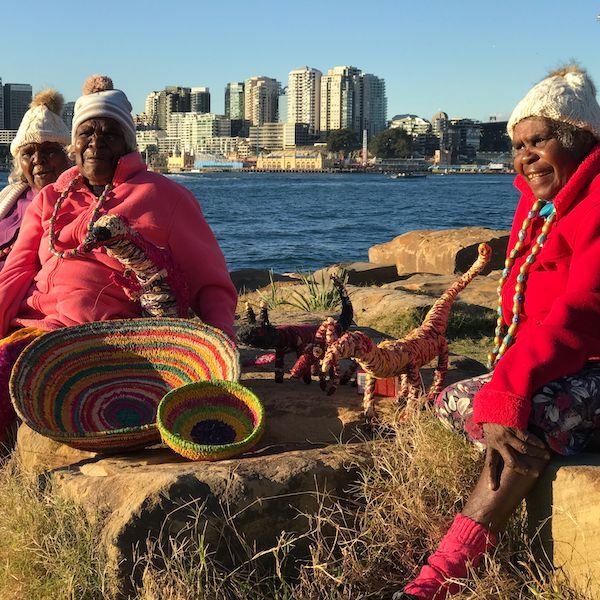Marie Le Lievre: Power and Presence
A defining feature of Marie Le Lievre’s work is her ability to masterfully blend colour across multiple layers, creating a hypnotic visual depth in every painting.
Words: Briony Downes
Photography: Emma Wallbanks
“THERE’S A LOT to communicate with oil paint,” says Marie Le Lievre. “You can have transparency, opaqueness, merging and obscuring. There are endless possibilities.” With a practice encompassing painting, drawing and photography, Le Lievre works from her studio in Lyttelton near Christchurch, creating most of her paintings without brushes.
A defining feature of Le Lievre’s work is her ability to masterfully blend colour across multiple layers. By deftly manipulating paint to obscure and reveal varied elements of the image, Le Lievre allows the viewer to visually traverse the painted surface like a topographical map of the unconscious. “I will pour tints and colours and let them merge into organic looking colour forms,” she says. “As the layers build up and things start to happen, it never goes the way I want it to go. The paint takes over. There’s always an element of surprise and discovery. I get a lot of my ideas from the medium itself and the journey of working with it on the studio floor.”
Pouring and dripping paint directly onto canvases spread out on the floor, Le Lievre composes her images by hand, using her fingers to push and mix the paint into abstracted forms filled with colour and texture. Constructing her paintings layer by layer, Le Lievre waits for each one to dry before pouring on the next, a time-consuming process requiring her to work on multiple paintings at once. A single work can contain up to seven layers of paint, lending a surprisingly volumetric weight to the otherwise delicate appearance of Le Lievre’s paintings.
While she admits to an affinity with colour field painting, a style of abstraction defined by wide expanses of colour, Le Lievre believes her work to be more figurative in nature. For Le Lievre, the physical process of deliberately containing paint within a specific area is the point where her work differs. She elaborates, “My work is less like the work of colour field artists like Dale Frank and Helen Frankenthaler, and more like Louise Bourgeois and Eva Hesse, artists whose work relates to the intersection between life and art.” When starting a painting, Le Lievre will begin with two opposing elements in mind – masculine and feminine, inner and outer worlds – which play a part in determining how the formal properties of her work will take shape. The rest depends on the paint. “Oil captures the uncontrolled,” Le Lievre says. “It harnesses that unpredictable element of human existence. Not everyone wakes up and has a clear path for what they are going to do. It’s a process we can’t completely control.”
Exploration of the unknown has been a lifelong interest for Le Lievre. Although she graduated in 2008 with a Master of Fine Art from the University of Canterbury in Christchurch, art was not Le Lievre’s first choice for study. Intrigued by psychology, Le Lievre initially began a degree in Criminology, before taking time away to travel to South America, Israel and England. While abroad, Le Lievre lived in Argentina and became increasingly fascinated by Roman Catholicism and how its influence infiltrated daily life. Connecting the experience back to her own Catholic upbringing, Le Lievre continues to be captivated by the rituals, relics and belief systems tied up with religion. “I’ve always wanted to learn about different cultures and how they express identity and conduct ceremonies,” Le Lievre reveals. “All the cultural paraphernalia connected to Catholicism, all these attempts to describe superstition and charms. Mixing myth with reality and trying to make sense of the unknown has always been interesting to me.”
Following her graduation in 2008, Le Lievre has maintained a consistent schedule of exhibitions throughout New Zealand, Australia, Japan and France, and has been a finalist in numerous art awards nearly every year since.
In addition to being a repeat finalist in the Wallace Art Awards and the Parkin Drawing Prize, in 2011 Le Lievre was the inaugural recipient of the Canterbury Arts and Heritage Trust Award. Her work has been collected by major private and public collections in New Zealand, including Christchurch Art Gallery Te Puna o Waiwhetū and the Wallace Arts Trust Collection in Auckland.
She has regularly participated in Sydney Contemporary and the Auckland Art Fair, and was due to present a solo exhibition of new work at the Melbourne Art Fair (MAF) in 2020.
Le Lievre had been intensely labouring for several months on the work destined for MAF when COVID-19 abruptly sent New Zealand into strict lockdown.
As the country quickly began to shut down and international borders were closed, Le Lievre was left with a full studio and an unexpectedly empty schedule. “When we first went into lockdown in New Zealand, I was exhausted,” she admits. “It ended up being a good time for me to take a break and have some tools-down time. I’ve been a mother for the past 20 years and it was the first time I’d done something like this on my own. It was just me and my little dog. I did a lot of meditation, projects in the garden, cooking. I didn’t look at my work again until the last week of lockdown.” With MAF now postponed until 2021, some of the work Le Lievre completed for this exhibition will be shown at Jonathan Smart Gallery in Christchurch later this year. The artist is also represented by Bartley & Company Art in Wellington. In addition to her paintings, Le Lievre has been working on a suite of new drawings and photographs. “I practice Kundalini Yoga and that has been a major influence in my new work, especially the drawings.” Focusing on abstracted depictions of the human figure, Le Lievre recent works use photography as a starting point, using images of yoga poses as source material for her drawings. “I’m hoping the drawings will look quite photographic with the polaroid-style square on a sheet of paper,” she says. “It’s like the viewer being invited to look in on a scene. The figure is the element of reality in my drawings while the paint adds an abstract edge.”
“I’ve been representing Marie Le Lievre for around eight years now. I was instantly drawn to the compelling mix of abstraction and figuration in her work, a mix that I find unusually elegant and deeply human. She’s been exhibiting work regularly in NZ for 15 years now – and built a growing reputation for drawing and painting grounded in mark-making that combines modernist sass with experience both profound and personal.
“The practise is distinct and consistent and quietly probing – working graphite and charcoal increasingly over the top of poured oil paint, working up photographs, and drawing always restlessly, instinctively, rigorously. Christchurch Art Gallery, Te Puna O Waiwhetu own a big painting. A recent Arts Council grant is funding a new website and three short texts in a lavishly illustrated catalogue for her show here at Jonathan Smart Gallery in November. Marie Le Lievre career is blooming, collectors new and old taking notice, and prices quietly rising.”
First introduced to Le Lievre’s work at a University of Canterbury School of Fine Arts lecture in 2008, Andrew Wood was immediately impressed. “The visual depth of each painting is hypnotic, the way the hand-worked pools of opaque and translucent pigment reveal and obscure. She has to use the whole of her body through her hands to move that paint around so that each canvas is a record of time and motion. They are paintings with secrets and psychology. I think it’s amazing that she’s done it all as a solo mother raising two children as well.
“When Marie includes figurative elements, it puts what are traditionally female experiences and concerns into a kind of artmaking that is often dominated by men, and with incredible power and presence. You can’t look at one of her paintings and not feel something deep and oceanic or crackling with anxious energy.
“Her first degree was actually in Criminology, which I think comes through in the forensic way she thinks these things through, but it’s also intuitive and random. At the moment she’s doing some really interesting work on medical herbs and entheogens – plants with psychoactive properties and how they had a role in the evolution of religion and spirituality.”
This article was originally published in Art Collector issue 94, October to December 2020.













